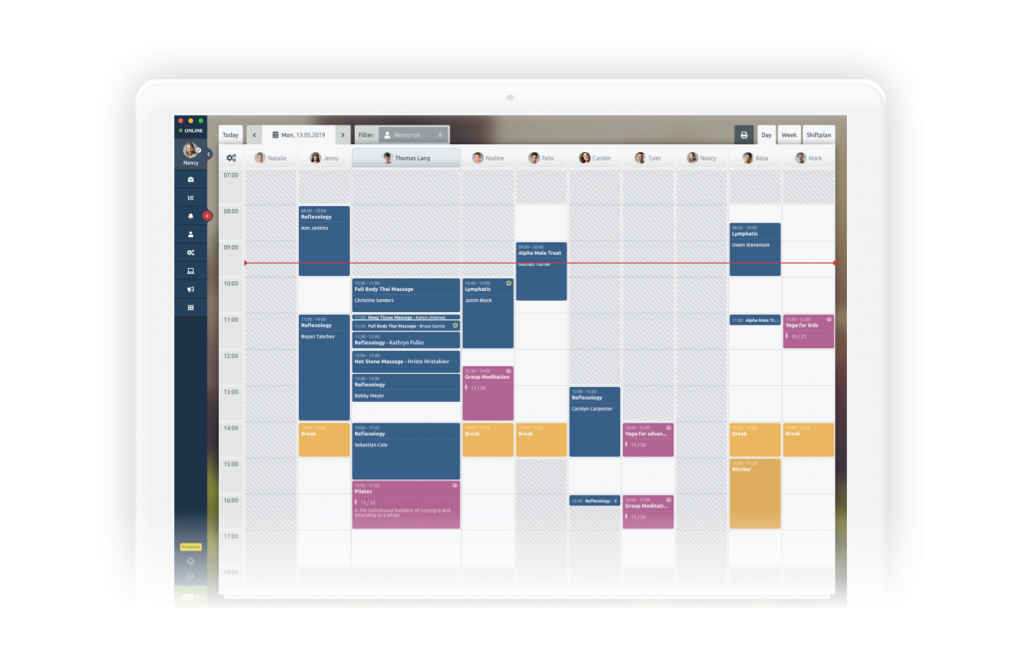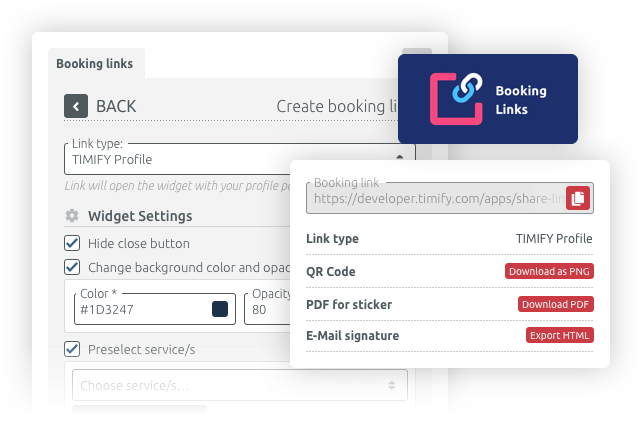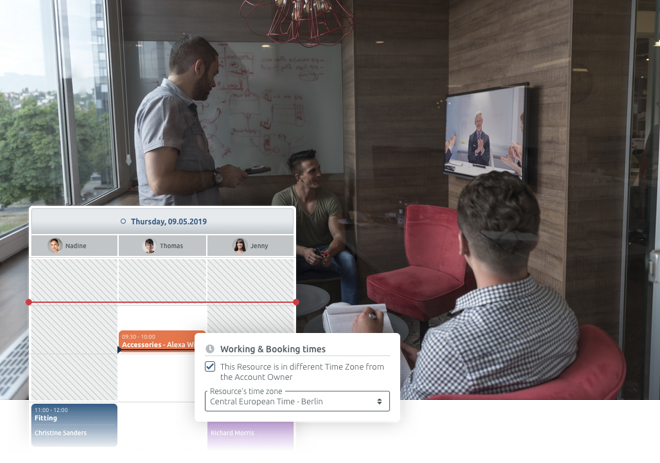

TIMIFY
TIMIFY is an appointment scheduling and resource management software for teams and enterprises
TIMIFY has always worked together as a remote team. In addition to our headquarters in Munich (Germany), we have a second location in Plovdiv (Bulgaria). We also work with some external employees and are flexible with our team members, letting them have the option to work in home office or remotely. As a company with a decentralised team, it was important to learn how to make all these options work together.
Team leaders often believe that working remotely automatically means less collaboration. Of course, it is a different kind of collaboration if it takes place on a computer screen, but you can achieve just as much remotely as you can in person.
In this post, we show you how our online scheduling and resource management software helps us coordinate our team and what tips you can use for organising your own remote team.
So how do we do it at TIMIFY?
We share our TIMIFY calendar with all team members

Coordinating variable working hours, holidays, and free time can be difficult for remote teams, especially when trying to coordinate across multiple time zones. We use TIMIFY to get a central view of everyone's working hours and availability. All changes are displayed in real-time.
At a glance, our team can see who is currently working from where, who is available part-time and who is on holiday. This live view of everyone’s schedule is an easy way to keep track of who is available and cut down on time wasted finding agreeable meeting times.
We use personalised booking links

Sending emails back and forth, which accompanies traditional meeting requests, is time-consuming, especially if you're trying to coordinate across multiple time zones. We love that TIMIFY automates all of this for us.
We also create personalised booking links for each of our teams or groups working on the same project using the Booking Links app. When a team leader or someone from another group wants to schedule a meeting, they can book one, several, or all of the people they need at the same time without sending emails or asking people about their availability.
We also use the function externally. When working with a company, for example, we create an individual booking link as well as specific customer and service features. This means that everything is already pre-set and only the time for a meeting has to be selected. As soon as the appointment is booked, a message is sent and automatically appears in all calendars.
We create custom appointments according to individual needs
We also find the option of adding buffer times before and after our appointments to be particularly useful, so that we can prepare for an appointment or finish working on something afterwards.
Another option is when someone is planning a project and needs to work with different colleagues at different times of the day. Our ‘split booking’ feature allows us to divide an appointment into different sections with different participants, kind of like appointments within the appointment. We can also plan breaks. Depending on whether two colleagues are in the same place, you can list the meeting room or for virtual meetings, you can add a Zoom or GoToMeeting link.
This saves us a lot of time and nerves since we no longer have to enter everything individually in the calendar or coordinate it with multiple emails.
We coordinate video calls with our own video solution, Zoom and GoToMeeting

Once per week, we have a video call with all team members, where we share news, updates on current projects and any other relevant information. This helps us build transparency and keeps everyone up-to-date about new developments.
TIMIFY is developing its own in-house video conferencing service. We've been testing this new feature with our regularly scheduled team video calls. In some cases, we still use Zoom and GoToMeeting. By integrating these services, a link to the video call is created as soon as we schedule an appointment with a colleague in the TIMIFY calendar. Everything works seamlessly, saving time for more important tasks.
We don't only use video calls for work-related meetings. If a colleague works primarily from home, it is important that they feel like a part of the team and not just in terms of work. From time to time we arrange to meet for lunch or for a casual coffee chat, which helps cultivate better work relationships.
As for our new TIMIFY video service... we'll keep you posted about any new developments.
We use Slack for general communication
When you work remotely, what it means to ‘come to work’ quickly becomes relative. We use the instant messaging service Slack to get together as a team.
Slack is our main communication channel, through which we exchange information about new projects or news from our team members. We differentiate between discussions that are thematically related to work, such as our developer, marketing or CRM teams, and chatter that usually takes place in the tea kitchen. These channels are where our teams coordinate and share drafts, models, revisions, notes and final results with others.
Communication in Slack makes working in home office not that different from working in the TIMIFY office. Either way, we can track projects and keep in constant contact with the team during working hours.
Summary
Working effectively as a remote team is not a quick process, but it is possible with an enthusiastic, agile team. Processes will become smoother over time. Once you have organised yourself, working together from different locations works just as well as together in one office.
If you would like to learn more about how TIMIFY can help your team organise a remote office, contact one of our employees in the chat on our website. We'd be happy to help.

About the author
TIMIFY
TIMIFY is a global leader in scheduling and resource management software-as-a-service (Saas). It is known for its sophisticated, secure, and customisable enterprise-focused technology.
Related articles


